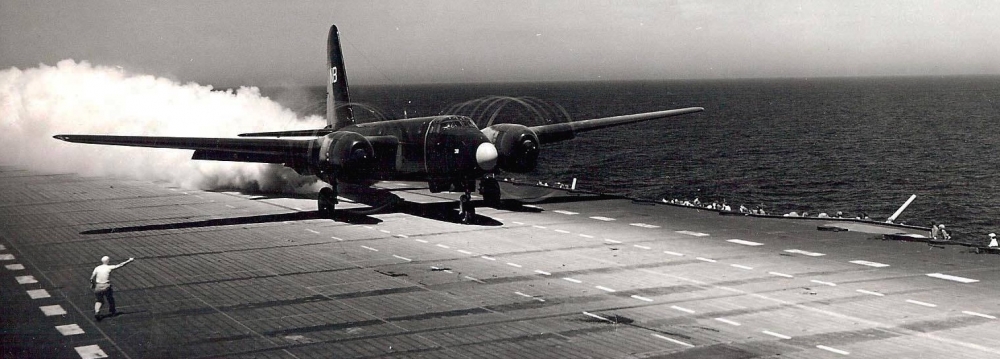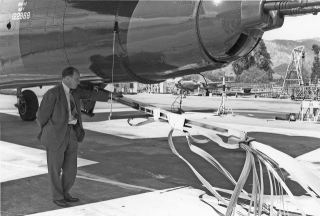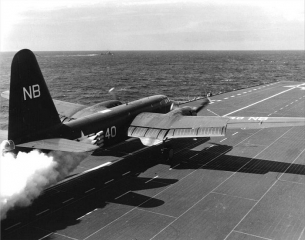
Images of the past: Nuclear Neptunes
In the period immediately after the end of World War II, the US Navy “Top Brass” painfully realised that they lacked an aircraft capable of accommodating and delivering an atomic weapon.
It was then decided to convert a number of Lockheed P2V maritime patrol aircraft for the job. These Neptunes, designated as P2V-3C were outfitted with jet assisted take-off (JATO) rocket boosters to enable them taking-off from an aircraft carrier.
 Eleven of these P2V-3Cs were converted: 122924, 122927, 122930, 122933, 122936, 122942, 122947, 122951, 122966, 122969, 122971. Of these, 122969 was fitted with an arrester hook and used for dummy deck landings at NAS Patuxent River, MD.
Eleven of these P2V-3Cs were converted: 122924, 122927, 122930, 122933, 122936, 122942, 122947, 122951, 122966, 122969, 122971. Of these, 122969 was fitted with an arrester hook and used for dummy deck landings at NAS Patuxent River, MD.
The initial plan was to recover it back aboard by the usual means, but after an evaluation of the degree of difficulty during field-landing trials at Patuxent River (MD), the tailhook was removed and the operational concept was to crane the P2V-3Cs aboard when required.
And as a result, any P2V mission that originated on a carrier would have to either end at a friendly land-based airfield or ditch in the sea, hopefully near a Navy vessel.
 The project was the brainchild of Captain (later Vice Admiral) John T. "Chick" Hayward. He became the commander of Composite Squadron Five (VC-5) commissioned at Moffett Field (CA) on 9 September 1948.
The project was the brainchild of Captain (later Vice Admiral) John T. "Chick" Hayward. He became the commander of Composite Squadron Five (VC-5) commissioned at Moffett Field (CA) on 9 September 1948.
The formation of this new squadron was the result of a series of successful test take-offs from the USS Coral Sea and USS Midway in the summer of that year. These tests proved that the modified P2V-3Cs were able to deliver a so-called “Little Boy” atomic weapon after take-off from an aircraft carrier.
And the modified P2V-3Cs were able to deliver at an enormous distance as both the nose turret position and the aft crew quarters were replaced by additional fuel tanks.
On 5 October 1949, a P2V-3C flown by squadron XO Commander Dick Ashworth took off from the USS Midway, at sea off Norfolk, established a record for distance flown by an aircraft launched from a carrier: it flew a total distance of 4,880 miles in a flight time of 25 hrs 40 min! (without aerial refuelling)
However the “Nuclear” Neptunes were only a stop-gap solution, as the successor, the North American AJ-1 Savage was well underway. But that is another story…………
Photos: US Navy and W.T. Larkins



